Client
Publication
Zheng, Z., Tao, L., Feijs, L.M.G. & Hu, J. (2013). Two design cases of social network for parents in the context of premature birth. In L.L. Chen, T. Djajadiningrat, L.M.G. Feijs, S. Fraser, J. Hu, S. Kyffin & D. Steffen (Eds.), Conference Paper: Design and semantics of form and movement. 8th International Conference on Design and Semantics of Form and Movement (DeSForM 2013), 22-25 September 2013, Wuxi, China, (pp. 185-188).

Touchee is designed especially for parens with pre-term babies, stimulating more social interactions within larger framework of family-centred care which is facilitated by bridging virutal and physical worlds of parenting.
Touchee contains two main modules, which are separated into NICU rooms and common areas in the hospital. Every NICU room is equipped with a tablet device with only wireless connection to the Wi-Fi network hosted by the hospital. With this mobile device, parents have direct access to a special designed online platform where parents with pre-term babies gather together for information/knowledge/experience sharing or requesting.
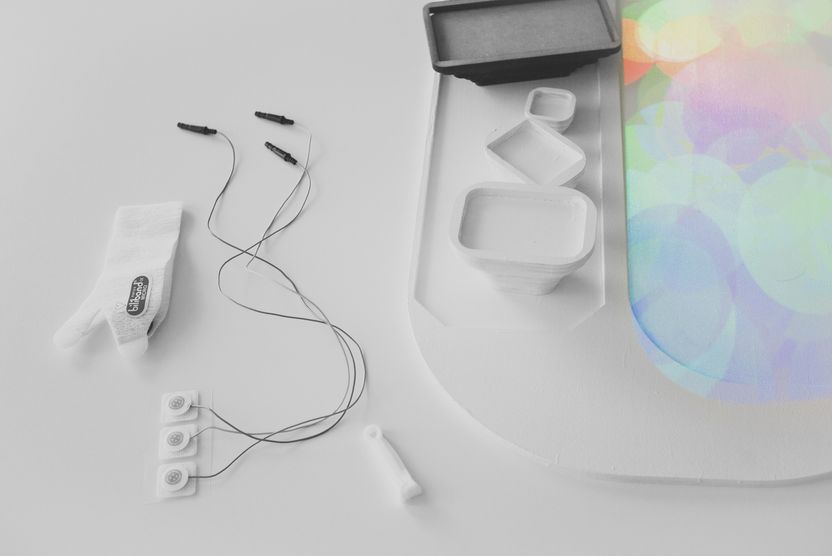
Another module is designed to enable the translation between virtual information to tangible objects, which will be placed in common areas in the hospital such as the family room in the NICU section in MMC Veldhoven. This toolset consists of three parts: a base which hosts all interactions between users and the system; several stands with various sizes for placing objects with corresponding dimensions; few standardised stands for different types of smart phone with them, preferably with an object collected from the hospital that they would like to associate it with certain piece of virtual note. In the common area rather than NICU rooms, it is safe to use not only Wi-Fi networks but also cellular data network. Parents can retrieve easily of those information that they posted before from the cloud. When prepared, the parent can place the object on one of the stands that fits, and assign the smart phone with chosen note on display to one of the stands for mobile phones. As soon as these two stand sare put on designated interacion area in the front, a lighting pattern will emerge on the surface.
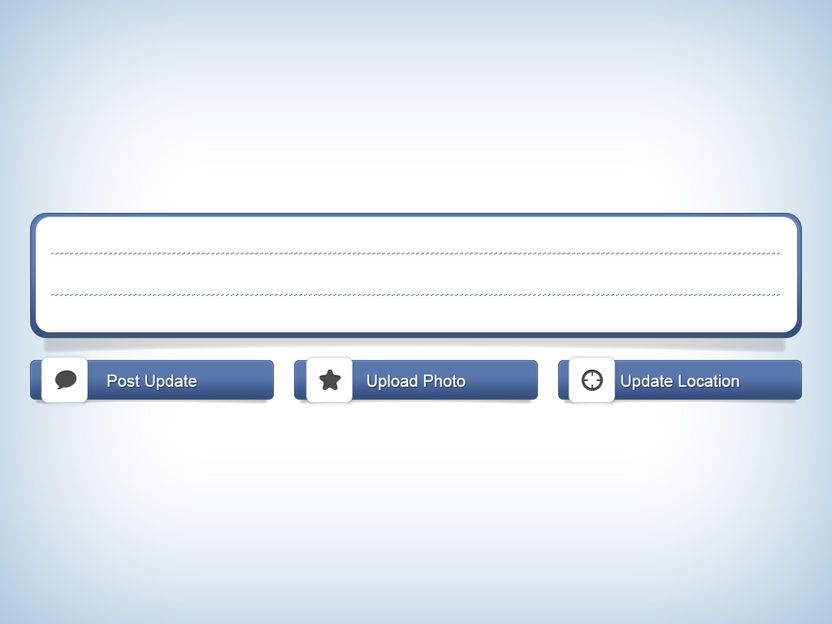
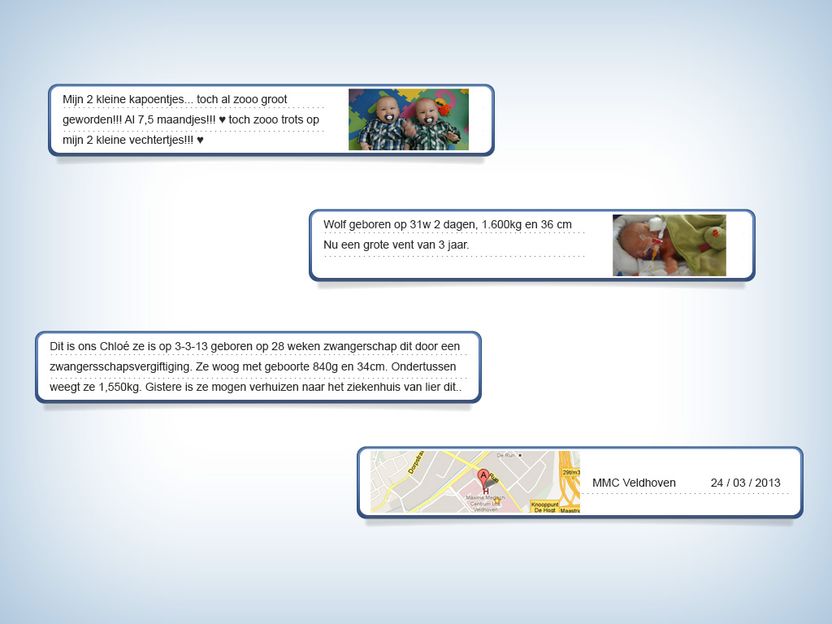
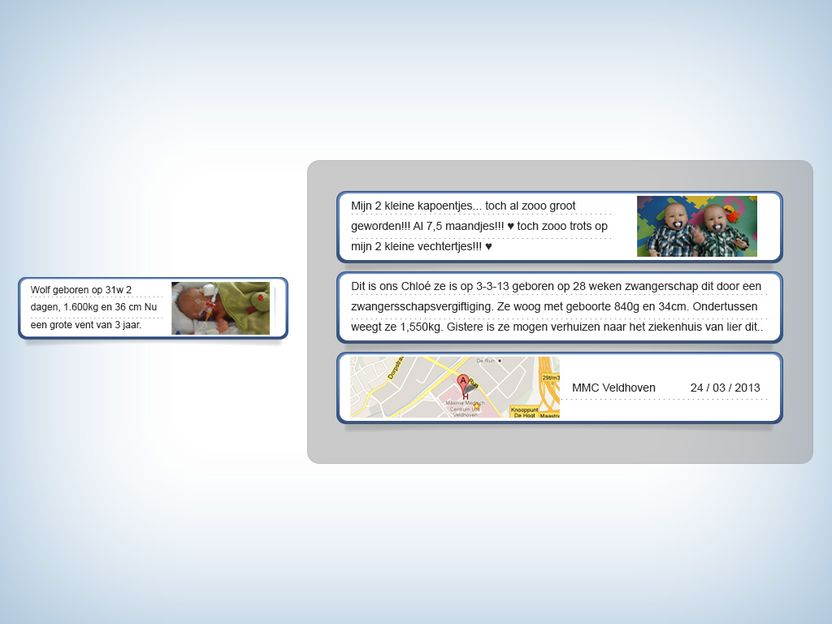
This lighting pattern is dynamic in the sense that it relates to the movement of the user of manipulating two stands on the interactive surface. Diverse moving patterns with full range of colours try to put forward proposals of different atmospheres. The user can interact/play with the toolset till he/she considers harmony between the moving pattern, the chosen object and its linking virtual information, illustrating a full "image" of the moment. By then by pressing a button on the smart phone, the details of moving pattern at the moment will be transferred to a third party service where provides materialisation with the most up-front technologies. After a few days, a tangible object "designed" by the user will be deliver to the corresponding NICU room.
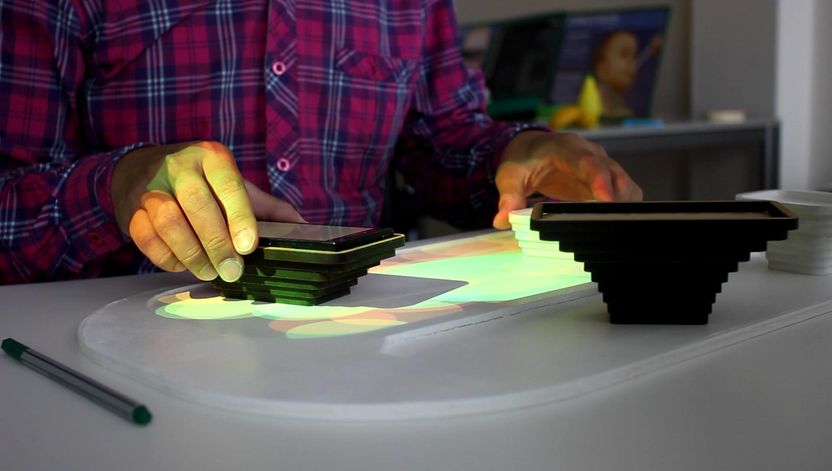
The last step of this creation process ends by placing the chosen object from the hospital into the "designed" container, making a complete set of gadget that represents both virtual and physical existence of memory.

The socialization opportunities during and after materialization come into scene in two scenarios. Since the toolset requires extra effort and time for parents to actually make something in a common area, other parents might observe his/her dynamisms and start communicating/sharing with him/her. Another circumstance is supproted by the online pooling technology that, when a connection is already established online and two couples of parents do want to meet each other, those gadgets with their creations and collections already will be an inspiring starting point of experiences exchanging.
